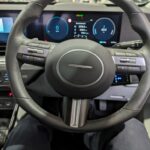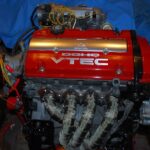The automotive world relies heavily on communication systems for diagnostics and control. Two prominent names in this field are KKLINE and OBD2. While often used interchangeably, they represent distinct aspects of vehicle communication. This article delves into the core Difference Kkline Obd2, clarifying their roles in modern car maintenance and diagnostics.
Decoding the Communication Protocols: KKLINE vs. OBD2
KKLINE, often associated with older vehicles, refers to a single-wire, K-Line communication protocol primarily used for diagnostics. It allows a diagnostic tool to communicate with a vehicle’s Electronic Control Unit (ECU), retrieving basic information like fault codes. This system, while functional, has limited bandwidth and functionality compared to its modern counterpart.
OBD2 (On-Board Diagnostics II), standardized in the mid-1990s, represents a significant advancement in automotive diagnostics. It’s a higher-level protocol that employs several communication interfaces, including CAN (Controller Area Network), J1850 PWM, J1850 VPW, ISO9141-2, and KWP2000. Notably, K-Line is one of the underlying communication protocols utilized by OBD2.
Think of it this way: OBD2 is the language used for diagnostics, while interfaces like KKLINE and CAN are the different methods of speaking that language. OBD2 standardizes the diagnostic requests and responses, ensuring compatibility across different vehicle makes and models. The chosen communication interface (e.g., KKLINE or CAN) dictates how these standardized messages are physically transmitted.
Why the Shift from KKLINE to More Advanced Protocols?
As vehicles became more complex, the need for faster and more comprehensive communication systems arose. KKLINE’s limited bandwidth hindered the efficient transmission of large amounts of data required for advanced diagnostics and real-time monitoring. Consequently, more robust protocols like CAN emerged.
CAN boasts significantly higher data transfer rates and supports multiple ECUs simultaneously communicating on the network. This enables sophisticated diagnostics, real-time data monitoring, and complex control functions necessary for modern vehicles.
OBD2 Scanners: Bridging the Communication Gap
OBD2 scanners act as interpreters between the vehicle’s communication system and the technician. They connect to the vehicle’s standardized OBD2 port and translate the data into a readable format. These scanners support multiple communication protocols, including KKLINE and CAN, enabling diagnostics on a wide range of vehicles.
When using an OBD2 scanner on a vehicle utilizing KKLINE, the scanner automatically detects the protocol and communicates accordingly. However, it’s important to note that the functionality may be limited compared to vehicles using more advanced protocols like CAN.
Conclusion: Understanding the Difference is Key for Effective Diagnostics
Understanding the difference between KKLINE and OBD2 is crucial for accurate vehicle diagnostics and troubleshooting. While KKLINE served its purpose in earlier vehicles, OBD2 with its diverse communication interfaces, including CAN, has become the standard for modern automotive diagnostics, facilitating comprehensive analysis and repair. Recognizing the underlying communication protocol helps technicians select the appropriate tools and interpret diagnostic data effectively.

